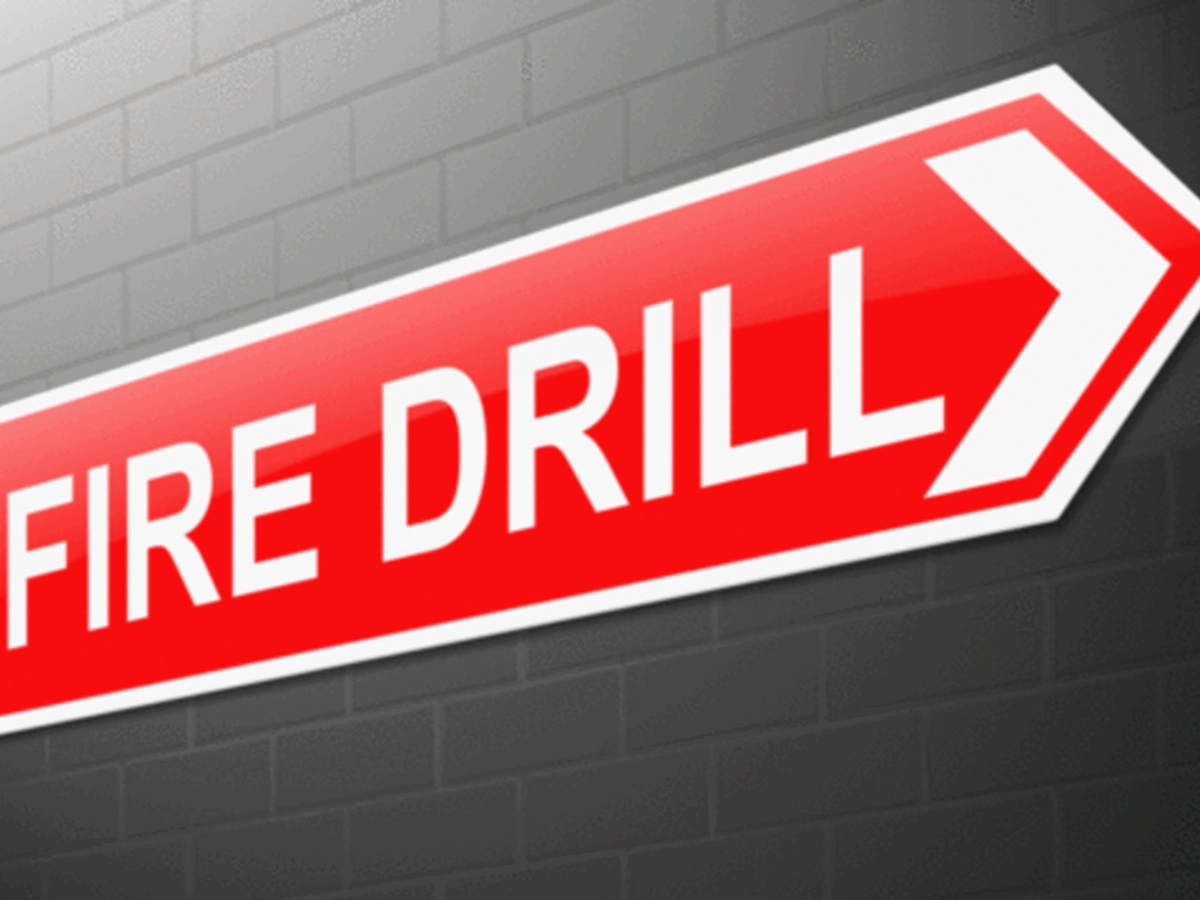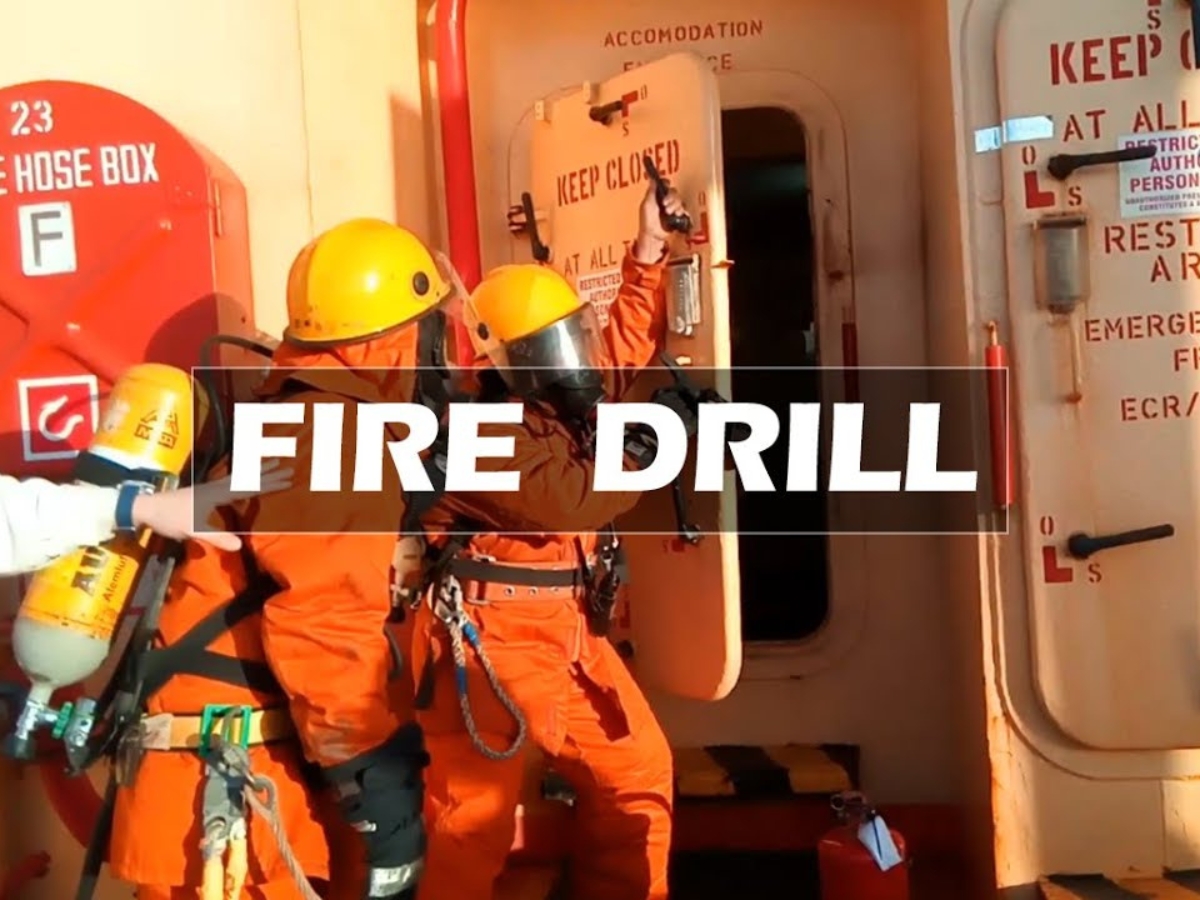Fire drills are crucial for ensuring the safety of everyone on the premises in the event of a fire. They allow for the efficient evacuation of people and the prevention of injuries or fatalities. Fire drills also help identify areas where improvements are needed in fire safety procedures, such as inadequate emergency exits or insufficient fire extinguishers. Through regular fire drills, staff members become more confident in their roles and responsibilities during a fire emergency and are better equipped to handle any situation that may arise. In short, fire drills save lives and protect property by preparing people to respond quickly and effectively to a fire emergency.
What is a Fire Drill?
A fire drill is a practice exercise conducted to simulate an emergency in which there is a fire. During a fire drill, the fire alarm is activated, and all occupants of a building or facility are expected to respond as if it were a real fire. The primary objective of a fire drill is to ensure that all building staff, visitors, and occupants are familiar with the fire safety procedures and evacuation routes. The drill also tests the effectiveness of the emergency response plan, identifies any weaknesses or areas for improvement, and allows staff and occupants to practice their roles and responsibilities during an actual fire emergency. Fire drills are an essential part of fire safety protocols and should be conducted regularly to maintain readiness and ensure the safety of everyone in the building.
What is the Recommended Frequency for Conducting Fire Drills?
The frequency of fire drills depends on several factors, including the size and complexity of the building, the number of occupants, and the level of fire risk. However, fire safety regulations and codes often specify the minimum number of fire drills that should be conducted annually. In general, it is recommended that fire drills be performed at least once every six months for most buildings, but more frequent drills may be necessary for high-risk facilities such as hospitals or schools.
Additionally, it is essential to conduct unannounced drills to evaluate the effectiveness of the emergency response plan and to ensure that staff and occupants are adequately prepared for a fire emergency. Regular fire drills and ongoing fire safety training are essential to maintaining readiness and ensuring everyone in the building knows what to do during a fire.
What is the Recommended Duration for a Fire Drill?
The length of a fire drill can vary depending on the size and complexity of the building, the number of occupants, and the specific objectives of the drill. Generally, a fire drill should take long enough to accomplish the objectives of the drill but not so long that it interferes with daily operations or becomes burdensome for occupants.
In most cases, a fire drill can be completed in less than 30 minutes, including the time needed to evacuate the building, perform a headcount, and reset the fire alarm system. However, drills that involve more complex scenarios or larger buildings may take longer. Planning and coordinating the drill in advance is essential to ensure it is executed efficiently and effectively.
The objective of a fire drill is to test and evaluate the effectiveness of the emergency response plan and evacuation procedures, so it is essential to take the time needed to conduct a thorough evaluation of the drill results and make any necessary improvements to the fire safety plan.
How to Carry Out a Fire Drill
When a fire alarm sounds in a building, everyone should begin evacuating immediately, regardless of whether it is a drill or an emergency. Fire drills are typically scheduled in shops and retail settings with fewer customers. Still, including “pretend” customers in the drill is essential to ensure that staff members know how to handle the evacuation process effectively.
During a fire drill, the fire alarm is activated. All occupants should follow the evacuation routes, marked by fire safety signs showing a running person symbol and directional arrows. Fire wardens are responsible for ensuring a complete and safe evacuation, following the company’s fire safety and evacuation plan in line with emergency procedures.
The results of each fire drill should be recorded and kept as part of the company’s fire safety and evacuation plan. This includes any faults or issues with the alarm system and fire safety features or equipment identified during the drill. Regular fire drills and ongoing fire safety training are crucial to maintaining readiness and ensuring the safety of all occupants in the event of a fire emergency.
Here Are Some Reminders of Why Regular Fire Drills Are so Important:
Regular fire drills are essential to ensure the safety of everyone in a building or facility. Here are some important reasons why fire drills should be conducted regularly:
- Familiarity with evacuation procedures: Regular fire drills ensure that everyone is familiar with the evacuation procedures, including the location of fire exits, fire extinguishers, and alarm pull stations.
- Identifying hazards and risks: Fire drills help to identify any hazards or risks that may be present, such as blocked exits, malfunctioning alarm systems, or other safety issues that need to be addressed.
- Improving response time: Regular fire drills help improve the response time in a real fire emergency. By practising the evacuation procedures, occupants become more familiar with the process and can evacuate more quickly and efficiently.
- Testing emergency response plans: Fire drills test the effectiveness of emergency response plans, including the roles and responsibilities of fire wardens, communication systems, and evacuation procedures.
- Promoting safety awareness: Regular fire drills promote safety awareness among staff and occupants, increasing their understanding of the risks and hazards associated with fire emergencies.
- Compliance with regulations: Regular fire drills are often required by law or regulations, ensuring that buildings and facilities comply with fire safety standards.
Ultimately Regular fire safety checks are crucial for all business premises, including ensuring all equipment is functional and exit routes and fire doors are unobstructed and signposted. Qualified technicians should conduct equipment checks to ensure everything is operational, including fire extinguishers, sprinklers, and fire alarm systems. Fire extinguishers have an expiry date and require servicing every 5-10 years, depending on the type.

Companies that conduct life-like fire drills with simulated hazards are better prepared for actual fires. Evacuation procedures should be where fire risks have been assessed, and fire exits and routes should be clearly labelled with safety signs. Conducting regular fire evacuation drills quickly and safely can save lives.
Fire training is crucial for all employees. Every alarm should be treated as if it were a real fire, and staff must know where emergency exits are and not hesitate to use them. All employees should know where assembly points are and practice assembling for a roll call taken by the responsible person, usually the trained fire warden.
Health and safety, fire warden, and fire drill training are available from accredited companies to ensure compliance with FSO and other legislation. Training fire marshals, conducting regular, effective fire drills, and recording outcomes are essential to maintaining workplace fire safety.
